Throughout its centuries-long history, humanity has preserved for posterity a generous heritage that has taken many forms.
One of the most important manifestations of this heritage are the architectural monuments, including mansions, which preserve the secrets and antiquities of others. Within their walls, outstanding personalities were born and lived, leaving a vivid mark on history and contributing significantly to the development and strengthening of their states. This blog presents a number of iconic castles that have survived throughout Europe.
Château de Villette (France)
Built in the 17th century, Château de Villette is one of the most precious monuments of French architecture. It is 40 minutes west of Paris. It was built by the architect François Mansart for the Count d'Ophelet, who was ambassador to Italy under King Louis XIV. A picturesque landscape park was laid out around the main building (château) - the creation of André Lenotre, who designed the famous palace at Versailles. The grounds include a chapel, stables, a greenhouse, a pair of rectangular ponds and a cascading fountain. Worthy of note are the sumptuous interiors and the authentic works of art kept here. Château de Villette is the epitome of luxury, elegance and the French expression 'the art of living'.
Throughout its history, it has been visited by many famous people, including intellectuals such as Thomas Jefferson, Benjamin Franklin and Thomas Paine. Today, the estate is an elite hotel with an outdoor pool and romantic-style rooms. American film stars such as John Travolta, Tom Cruise and singer Lenny Kravitz have stayed here. The estate has been the setting for several feature films. Chateau de Villette is often chosen by wealthy newlyweds to celebrate their weddings in a private setting.
Château de Villette on the map
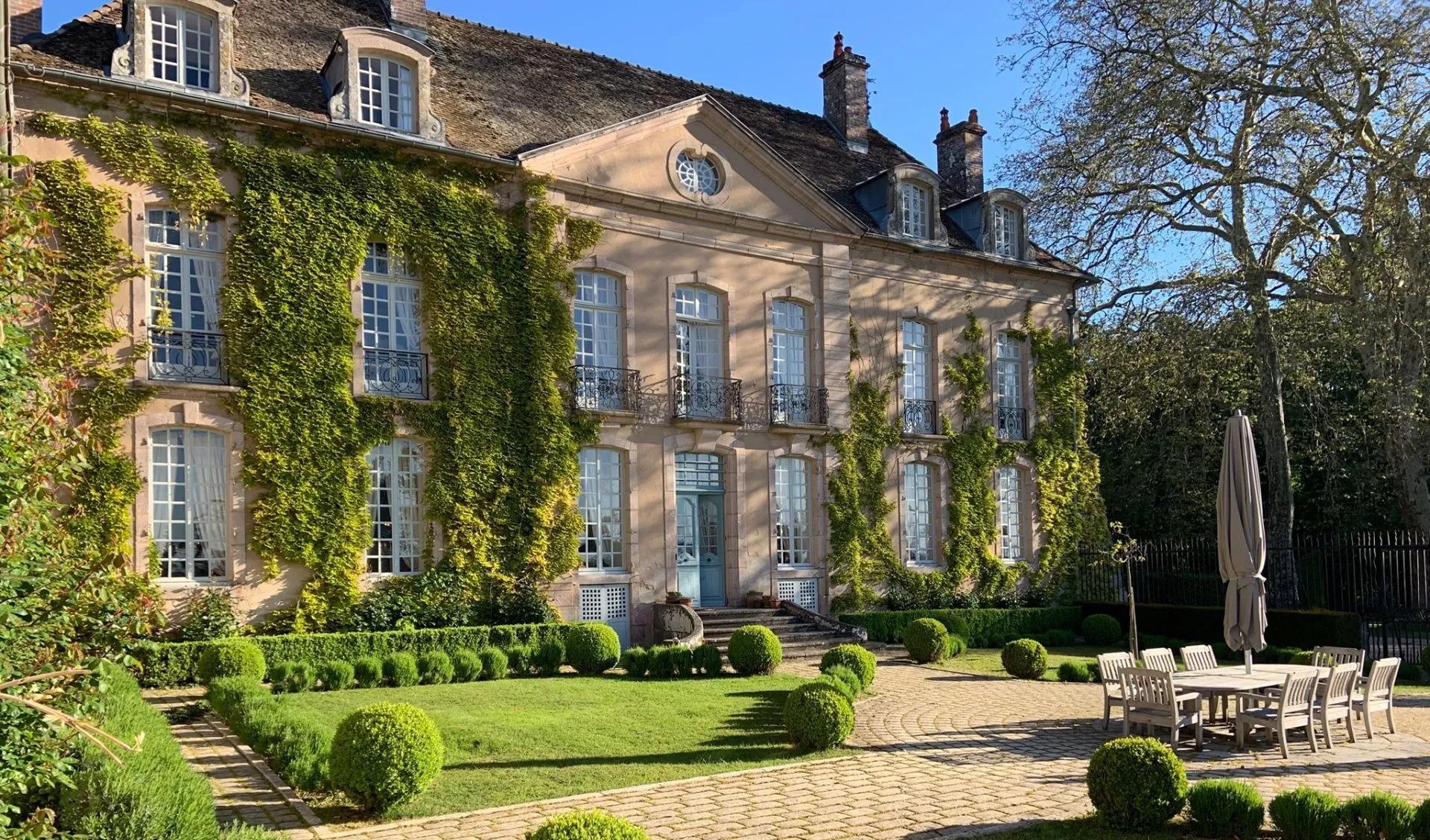
Ostankino Manor (Russia)
Located in the Ostankino district of Moscow, opposite the famous television tower, the Ostankino Mansion is an outstanding example of 18th century architecture. The mansion was built in the classicist style for Count Nikolai Sheremetev. The central part of the building was turned into an auditorium, as the owner was a passionate theatregoer and had his own company - about 170 talented serf actors. Even the space in front of the building's facade resembles a stage. The count also wanted the hall to be used for dancing, and the Siberian wood used in its construction made this possible.
According to contemporaries, Tsar Alexander II signed a draft decree on the abolition of serfdom in the Ostankino Palace. After the Revolution of 1917, the estate was nationalised, and two years later it was declared a national treasure and opened to the public. Incidentally, the Palace Theatre is the only surviving theatre building from this period in Russia.
The Church of the Life-Giving Trinity, within walking distance, is an original monument of religious architecture from the late 17th century. The church has an attractive appearance, decorated with white stone carvings and multi-coloured tiles. Today the Ostankino State Museum is located on the territory of the manor. The interiors of the halls have preserved their decoration and authenticity. The collection is based on the family collection of one of the noblest old Russian families - the Sheremetyevs. The collection of Russian portraits from the 18th and 19th centuries, a collection of gilded Baroque furniture, European, Russian and Oriental porcelain. Ostankino is deservedly popular with residents of the Russian capital and visitors to the city. Today the estate and adjacent park are closed for restoration.
Ostankino Estate Museum on the map
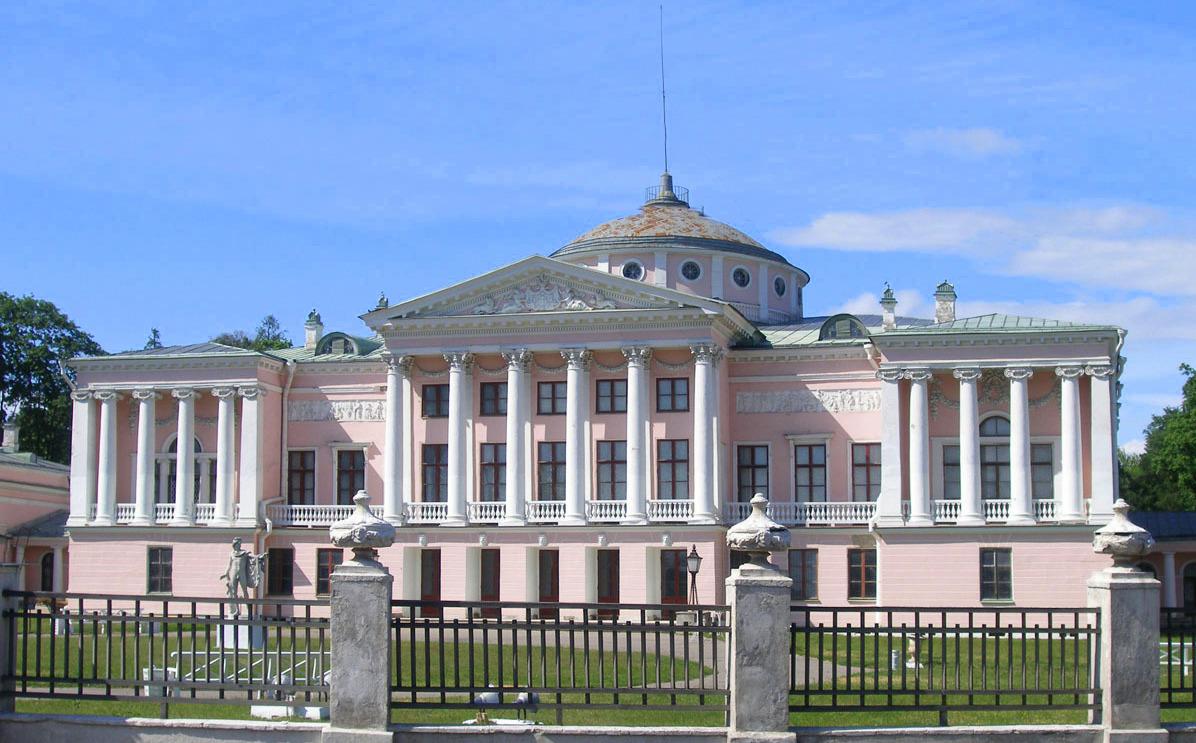
Villa Balbiano (Italy)
Situated on the western shore of Lake Como, the villa is a monument of 16th century architecture. It once belonged to Cardinal Tolomeo Gallio and was his main residence. A century later, the villa was enlarged and embellished by the next Cardinal, Angelo Maria Durini, who used it for banquets, dances and other social events. With each new owner, the manor grew in splendour. Here you can still see works of art and furniture from the past centuries, frescoes from the XVII century painted by the famous masters - the Silva brothers.
Today Villa Balbiano is a private residence with six luxurious suites with crystal chandeliers, antique gilded mirrors and enchanting lake views. The gardens surrounding Balbiano cover over 2 acres and have been recognised for their beauty by the British Society of Garden Designers. The famous film director Ridley Scott filmed his film 'The House of Gucci' here, starring Lady Gaga and Al Pacino. Villa Balbiano often hosts glamorous social events and home parties for wealthy clients from around the world.
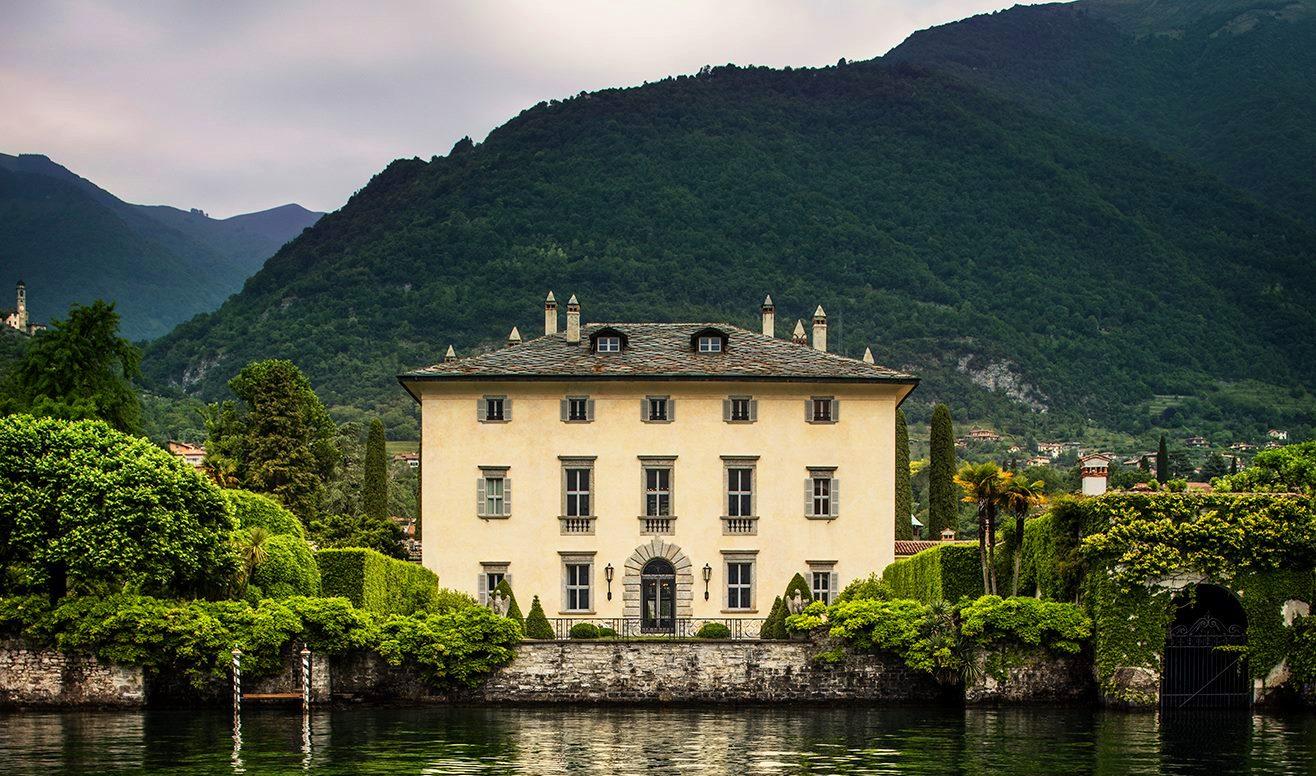
Apsley House (UK)
Located in the heart of London, Apsley House is the former home of the first Duke of Wellington, victor of the Battle of Waterloo. The building was designed and built in the 1870s in the Regency style by the then fashionable architect Robert Adam. Nearby is the main entrance to the famous Hyde Park, then owned by the British Royal Family. The Duke bought the mansion in 1817 and transformed it into a luxurious residence befitting the upper echelons of the British aristocracy. After 6 years, Wellington became Prime Minister and made radical changes to the architecture of the building: the Waterloo Gallery was opened in the west wing, new bedrooms and a luxurious grand dining room were added. The house was also fitted with iron shutters and railings, earning the owner the nickname 'The Iron Duke'.
In the middle of the last century, part of the mansion was turned into a museum, the basis of the collection being works of art captured by Wellington in Napoleon's camp. Here you can admire paintings by Velasquez and Rubens, Correggio and Goya. The museum has one of the finest collections of silver and porcelain in the world. An exhibition on the life and legacy of the Duke of Wellington and authentic artefacts from the historic Battle of Waterloo opened within its walls in May this year.
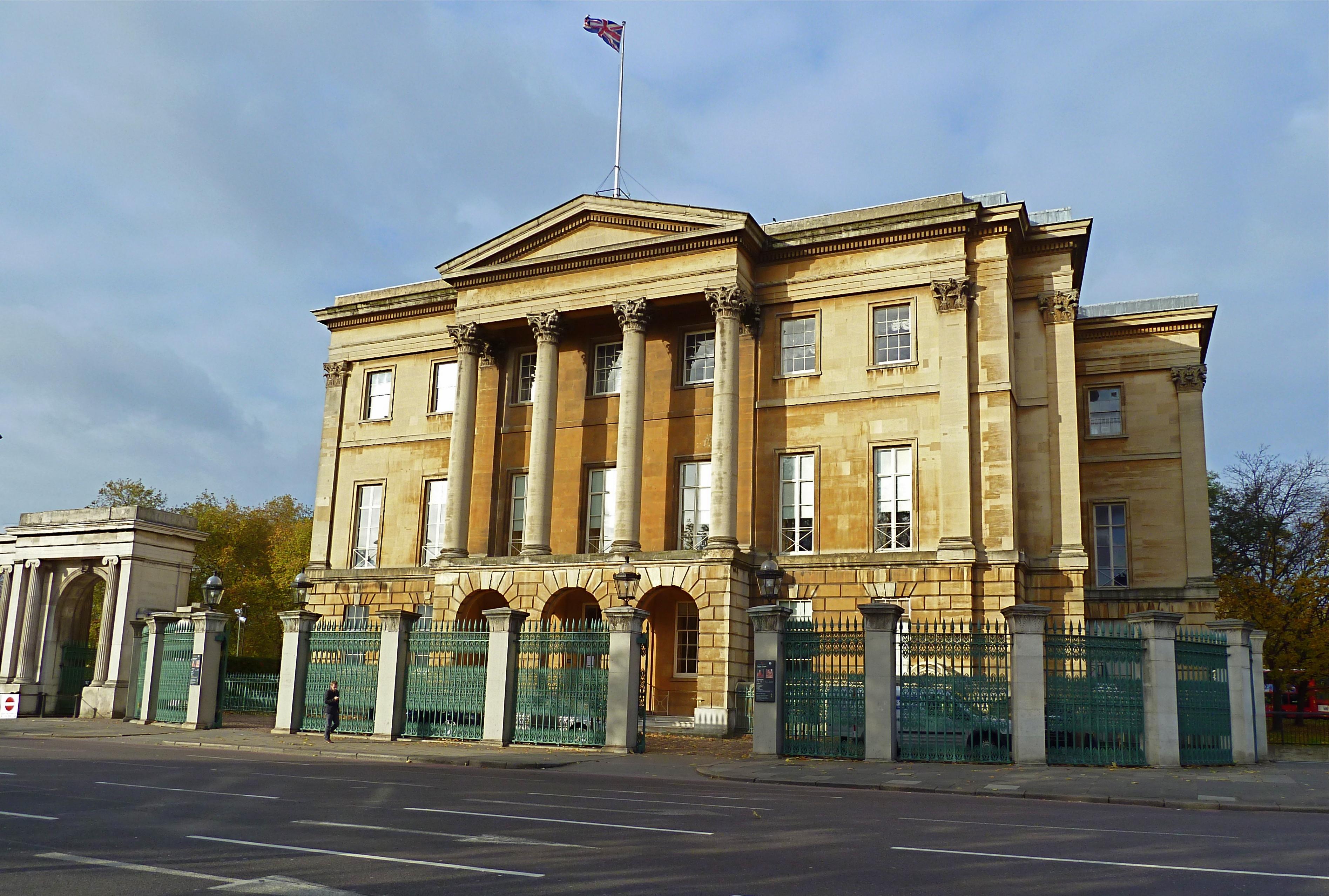
Palacio de Cibeles (Spain)
The Palacio de Cibeles is one of the Spanish capital's most impressive architectural monuments. It was built in 1909 by the architects Antonio Palacios and Joaquín Otamendi in an individual style that combined neo-Gothic and Spanish urbanistic motifs. With a maximum height of around 40 metres, the complex of two white-faced buildings in the historic centre of Madrid was built as the headquarters of the local post and telegraph company and was originally called the Palacio de la Comunidad. At the time, the new mansion was a symbol of progress and national pride. During the Spanish Civil War in the late 1930s, bullet holes appeared in the façade of the building, traces of which can still be seen today. At the beginning of the 21st century, with the decline of the telegraph and postal services, the building was adapted to the needs of the Madrid City Council and renamed the Sibelius Palace. Today it is divided into several parts:
- The old Post and Telegraph Courtyard, which has a popular restaurant on the first floor;
- The Antigua Chapel, ideal for presentations and other celebrations;
- The Centro offers an extensive programme of contemporary art;
- Crystal Gallery, which features works by great Spanish artists such as Goya, Velázquez and Dalí. There is also a bookshop, a café and a viewing platform with magnificent views of the old city;
- The Music Box Auditorium, which seats 262 people. It is used for recitals, concerts and conferences.
The last restoration of the palace took place in 2010, when the antique lamps and furniture, marble floors and unique tiles were renewed.
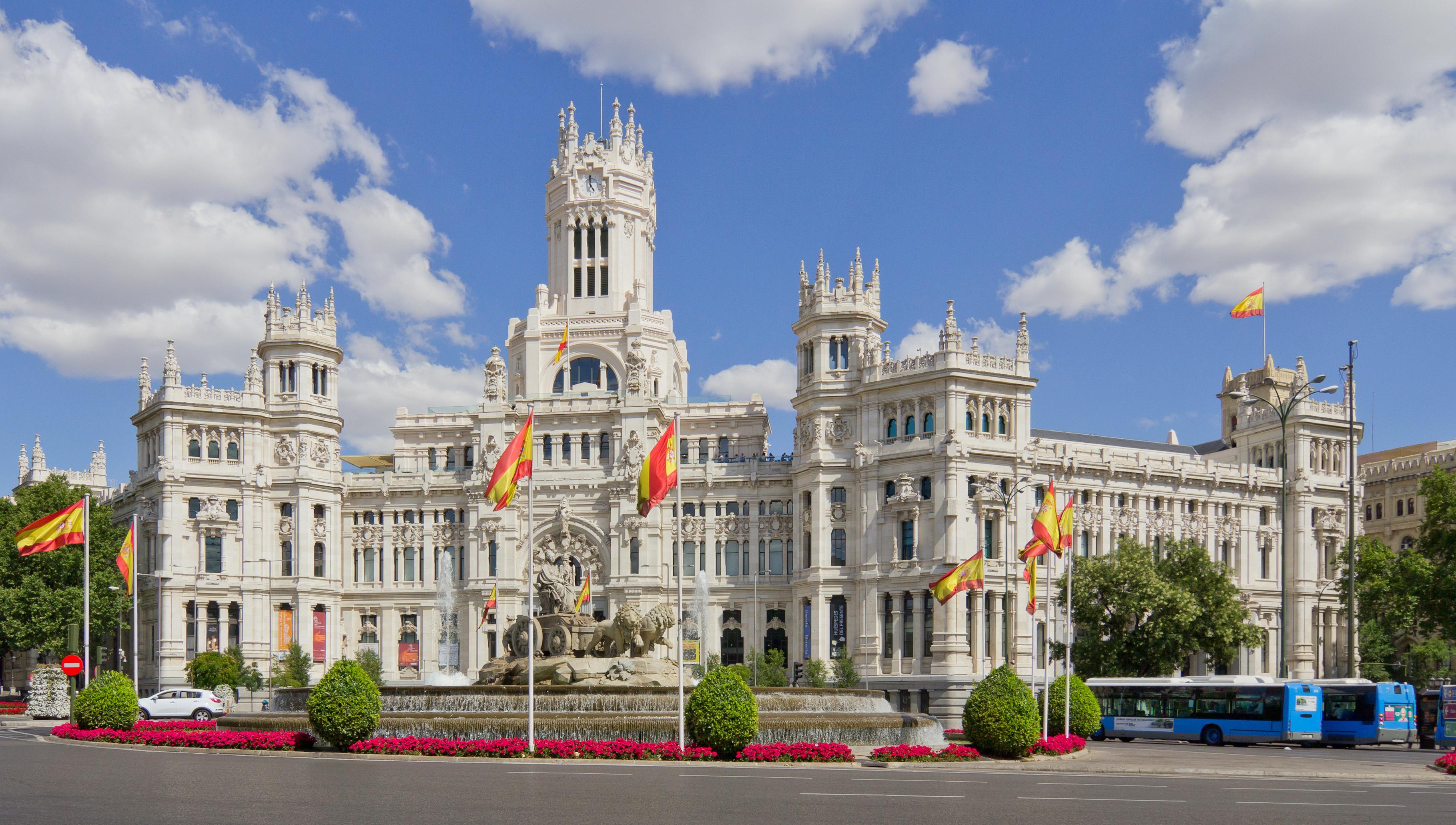
Strömsholm Palace (Sweden)
The baroque Strömsholm Palace was built on a natural stone island on the site of a fortress dating from the 1550s. It has been the residence of several Swedish queens. The queens, who received the palace as a gift or as an attribute of power, contributed greatly to the development not only of Strömsholm Palace but also of the surrounding area. Crowned heads liked to stay here when they travelled south. The palace consists of a central manor house framed by four square corner towers, a central tower and some 20 outbuildings, originally set in a French Baroque park.
The interior of the manor is based on the designs of Swedish King Gustav III, of which the Royal Bedroom is a typical example. Among the attractions are 18th-century furniture and a collection of Swedish paintings. Today, many lovers join their hearts in the castle chapel. There is a riding school in Strömsholm Park, where equestrian competitions are held every year. Strömsholm Castle is surrounded by meadows and pastures, oak and hazel forests.
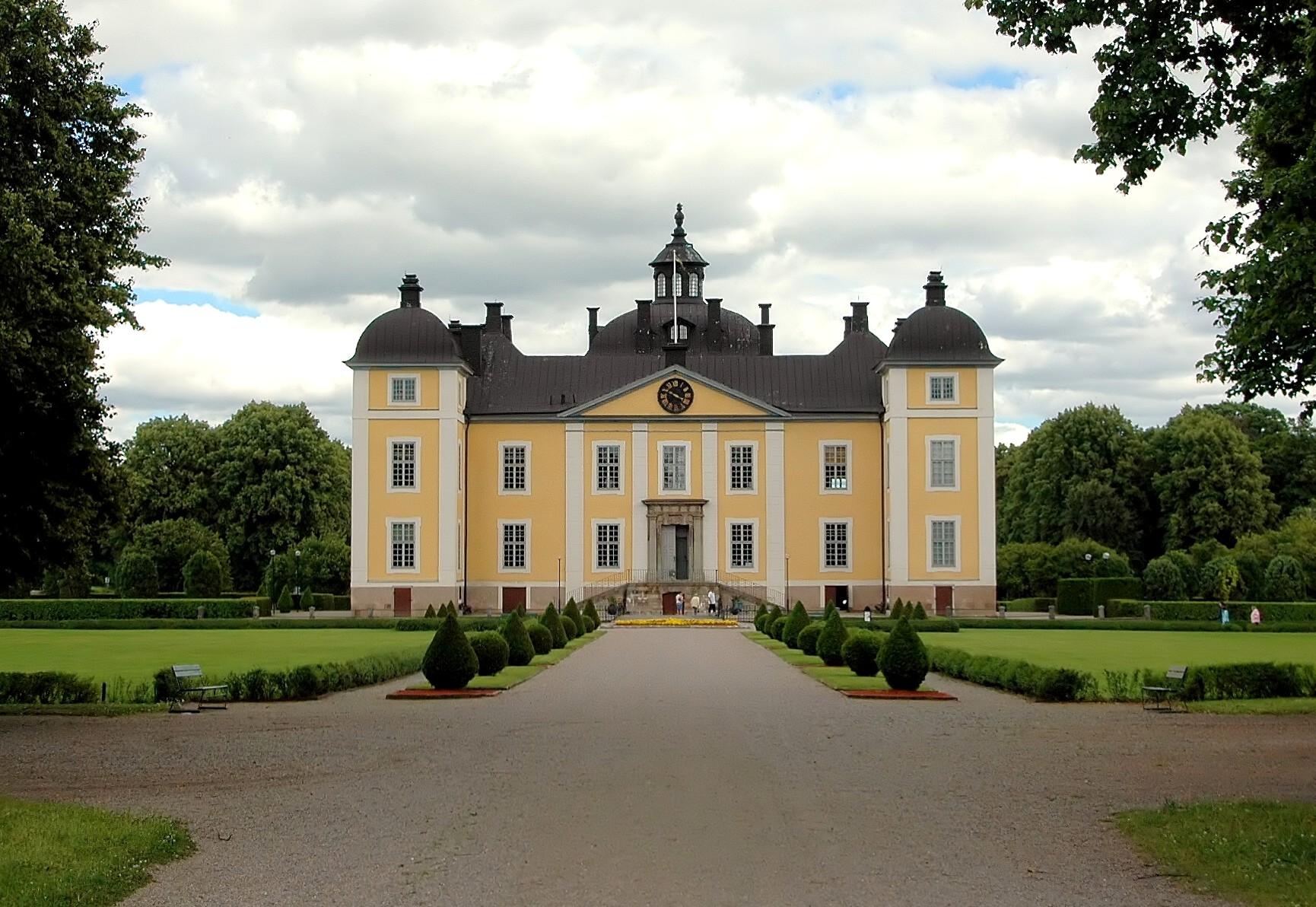
Linderhof Castle (Germany)
Linderhof Palace, also known as Linderhof Royal Residence, is located in south-western Bavaria. It is the smallest of the three residences built by King Ludwig I. It was constructed using complex architectural solutions, with a Baroque façade concealing a Rococo interior. The king spent most of his life in this castle from 1876. The inspiration for the construction of Linderhof Castle came from the palace of the French Sun King Louis XIV, who was Ludwig's idol. The symbol of the celestial luminary can be seen throughout the magnificent interior of the building and, in imitation of Versailles, the bedroom is the largest room in the palace. The Hall of Mirrors was used as a drawing room where Ludwig liked to read through the night. The 50 acres of gardens surrounding Linderhof Palace are considered one of the finest creations of historical horticulture, as the owner was fascinated by the trees. There is a 300-year-old lime tree that the owner used to serve meals and entertain guests in its shade. The garden is decorated with sculptures of the king himself and heroes of Greek mythology.
The following buildings can be seen in the castle grounds: The Moorish Tent was originally built for the Paris Universal Exhibition in 1867. In the same year it was bought by Ludwig and decorated with a magnificent chandelier, a marble fountain and the Peacock Throne. The Venus Grotto is an artificial cave of stalactites and stalagmites built into the hillside. It is illuminated by multi-coloured glass panes. The owner has luxuriously decorated the Moroccan house in the national style. In the central room, light streams through coloured glass arranged in the shape of a pyramid. The Gurnemanz Hermitage, a chapel-like hut, is part of the setting for the third act of the opera Parsifal, written by Richard Wagner for its theatrical premiere. Since 2011, a permanent exhibition on the history of the area and the palace itself has been open to the public.
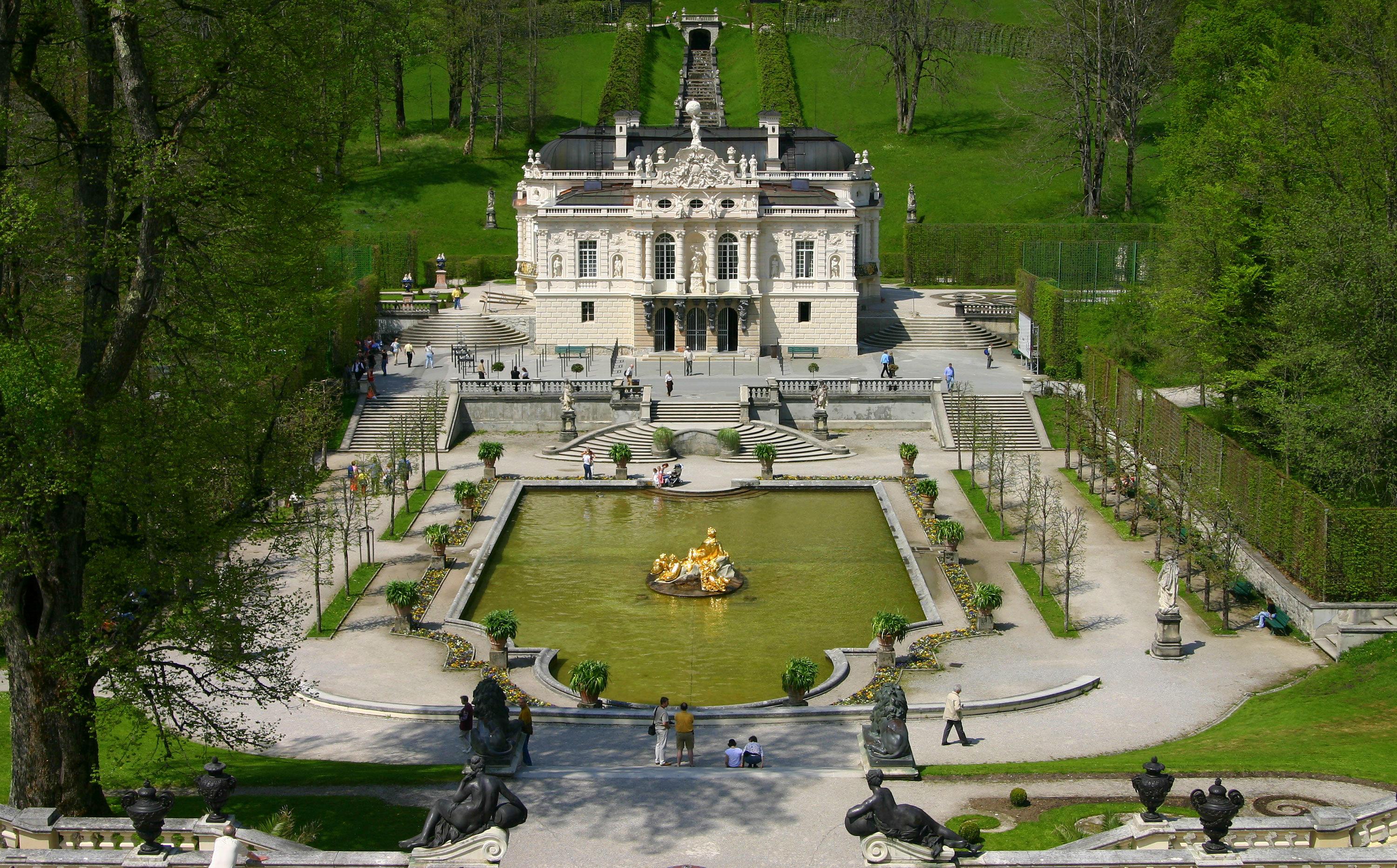
Széchenyi Mansion (Hungary)
Several generations of the Széchenyi family were involved in the construction of this historic Baroque mansion, designed by the French architect Anton Pilgram. Members of this family have served their country faithfully and achieved considerable success in various fields. As a sign of recognition, the Szechenyi family received the title of Count, and the construction of the family mansion was begun in 1750 by General Antal Szecheny. The reception halls, staircase and chapel are still intact. The general's son Ferenc housed his famous collection of several thousand manuscripts, old engravings, books and coins in the castle.
In 1820 the most famous member of the family, István Széchenyi, a prominent politician, reformer and former minister, inherited the mansion and extended it with side wings connected to the central building. He was the founder of the National Library and the Hungarian National Museum. István also established a model farm on the estate and began to develop a horse breeding centre. After his death, his son planted many rare plants around the building. The highlights of the garden were a fountain and a maze of hedges planted in geometric shapes. Today there are over 40 species of trees and shrubs. Since 2014, the István Széchenyi Memorial Museum has been protected and managed by the Hungarian Cultural Foundation. The history of the family and its most prominent member is presented in an interactive exhibition.
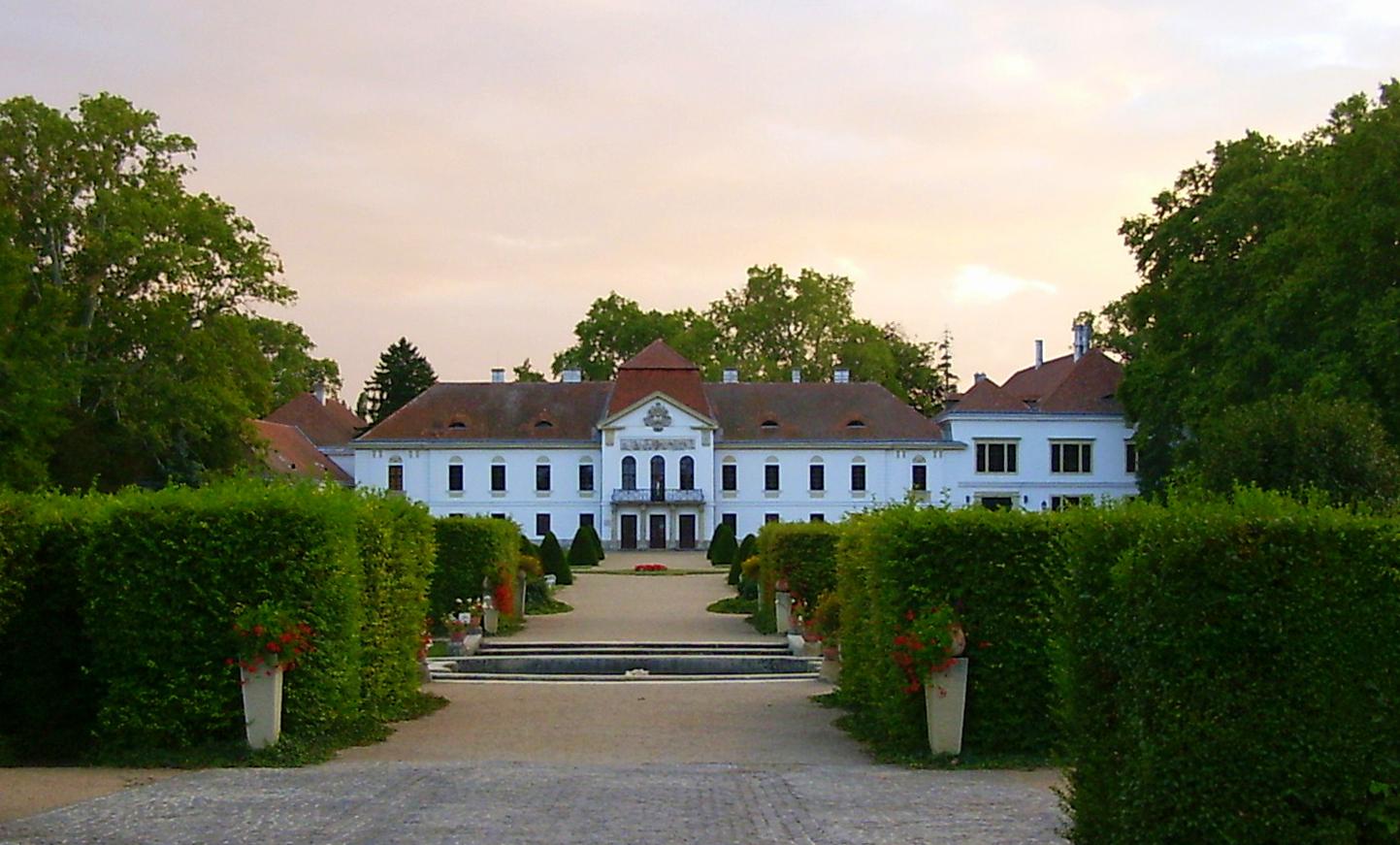
House of Blackheads (Latvia)
One of the city's main sights, first mentioned in 1334. The building was built as a warehouse for the needs of merchants arriving in Riga. At the end of the 15th century, it was leased to the Brotherhood of Blackheads, after whom it was named. It consisted of young and enterprising Riga merchants who traded with foreign countries and was considered the richest and most influential trading organisation in the city. It should be noted that the members of this community used the building for parties and masquerades, musical evenings and receptions. The patron saint of the fraternity was Saint Mauritius, whose image appears on the fraternity's coat of arms. The villa was often visited by dignitaries, including Empress Catherine I, Peter the Great, Chancellor Bismarck and Queen Elizabeth II.
Badly damaged during the Second World War, the House of Blackheads was fully restored in the early 2000s, in time for the 800th anniversary of the Latvian capital. After a few years, it became the residence of the President of Latvia for a short time while his palace was being restored. After the head of state moved in, a museum was opened here, with exhibits including luxurious interiors, paintings and sculptures. The building also houses collections of silver and crystal, models of sailing ships and ancient weapons. Nowadays, it regularly hosts cultural events, classical music concerts, exhibitions and guided tours.
House of the Black Heads on the map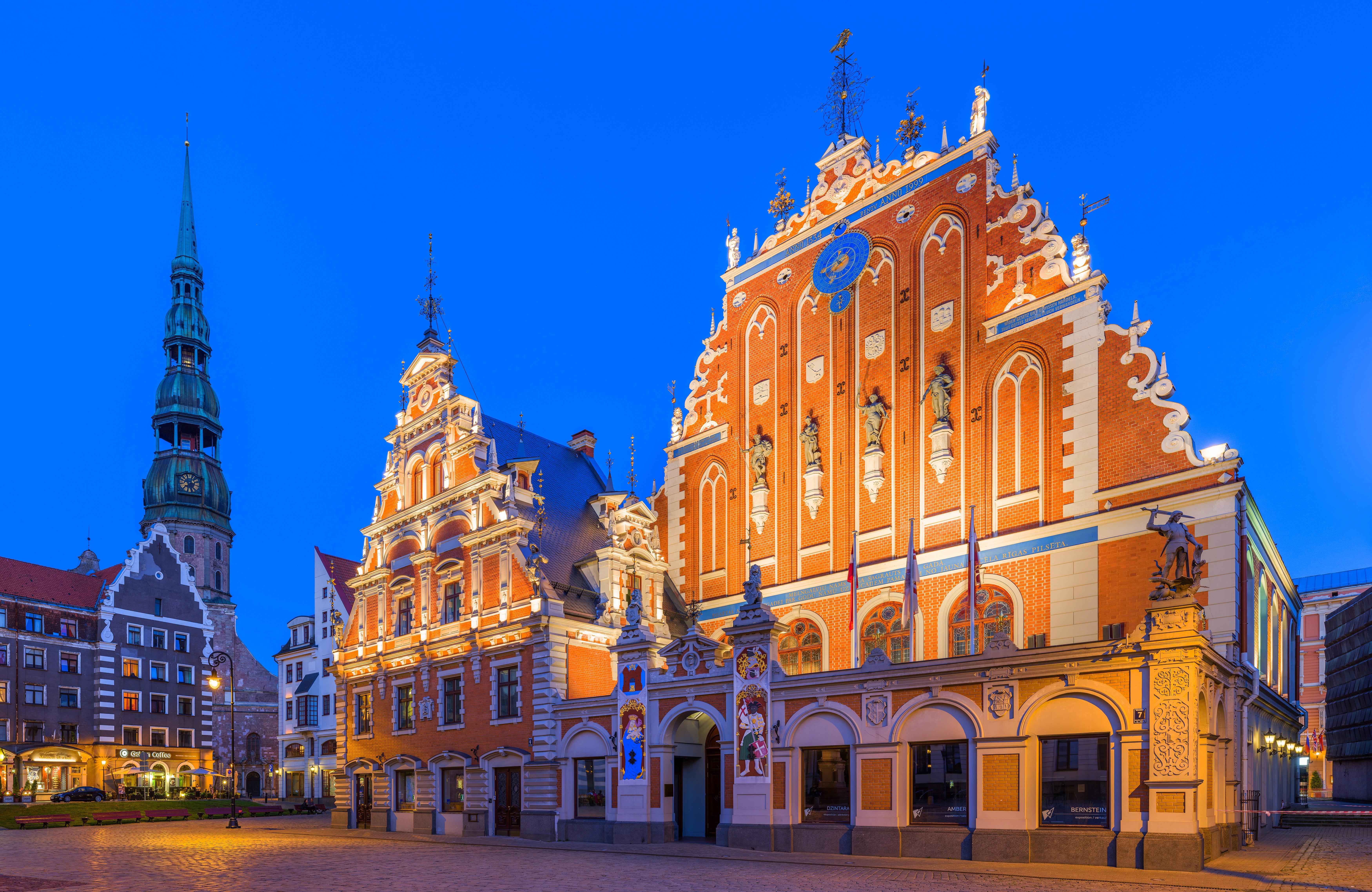
Rossides Residence (Cyprus)
Today it is one of the most prominent buildings, a true jewel of the historic centre of Limassol. It is located mainly on Archbishop Kyprianou Street. The former mansion of the Rossides family was built in 1882 and its first owner, Georgios Rossides, was an important economic and political figure not only in the city but also in Cyprus. At first, the lower floors of the mansion housed several shops, but after a series of financial failures by the owner, the mansion was sold to the colonial administration of the island, where the administrative services were located.
The building remained in this form until 1950, when the land registry was moved here. During this period, architectural changes were made, including the replacement of wooden doors with metal ones and the addition of concrete structures in some places. In 2004, the property was handed over to the Cyprus University of Technology, which undertook extensive restoration work to restore the Rossides Mansion to its original historic appearance. Today it houses the Dean's Office of the University.
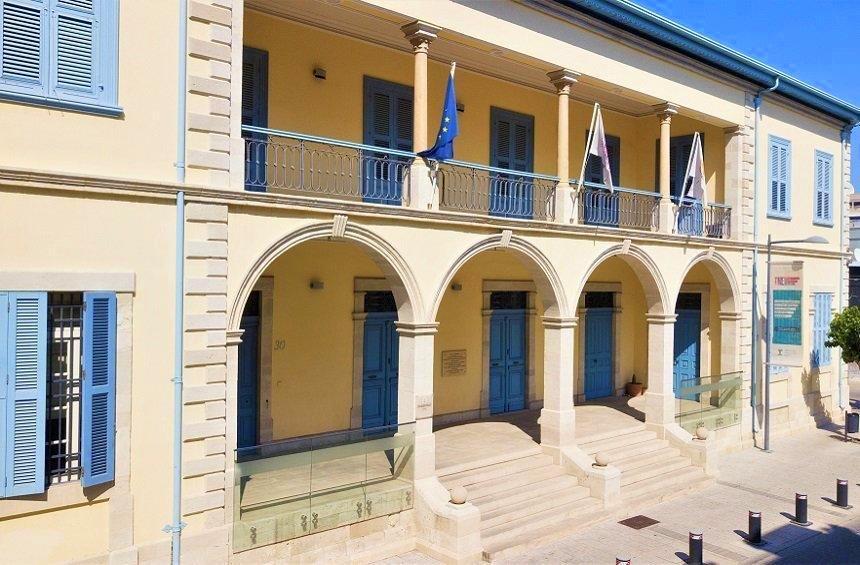
Read also:

